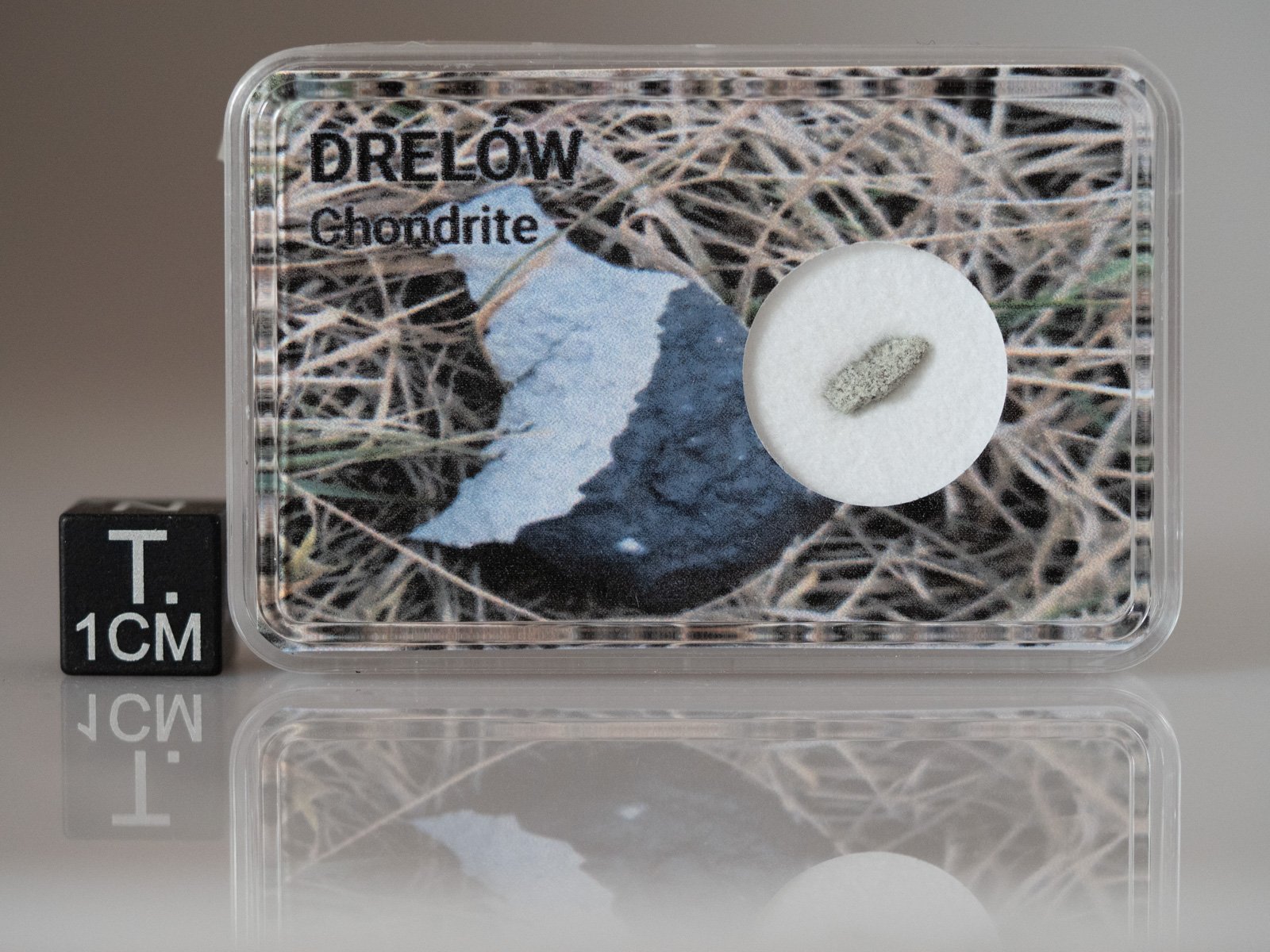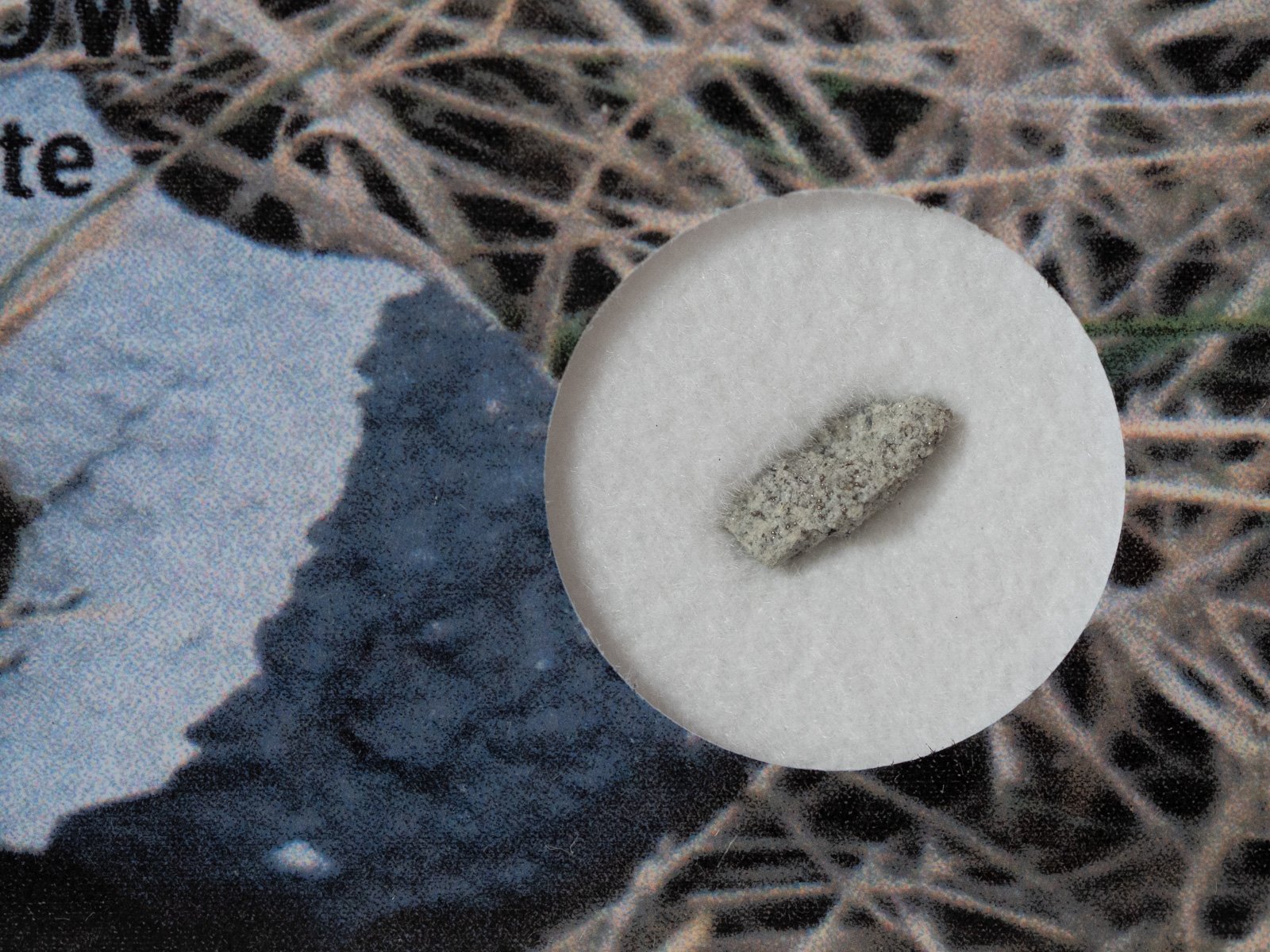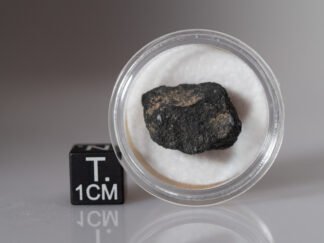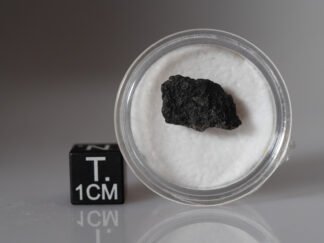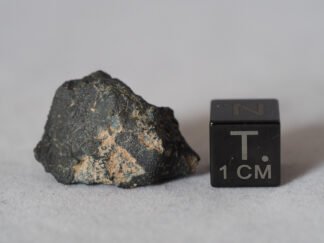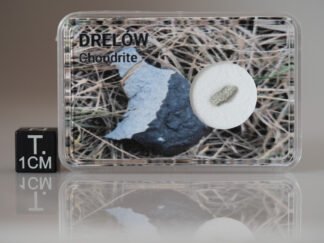Description
0.051 g fragment
Sold in a box with label / signed certificate of authenticity
Sold in a box with label / signed certificate of authenticity
Drelów 51.878808°N, 22.826658°E
Biala Podlaska, Poland
Confirmed fall: 2025 Feb 18
Classification: Ordinary chondrite (L6)
History: The meteorite fall was recorded and found by the Skytinel fireball network, established 10 months earlier by Mateusz Żmija. The fall was observed on 18 Feb 2025, at 18:04 (UT+1) by 10 cameras in this network. The meteoroid’s orbit, atmospheric trajectory, and strewn field were calculated, and about 60 fragments with a mass of approx. 3700 g were found. Maksymilian Jakubczak found the first fragment (93 g) four days after the fall, before any rain had occurred. On 23 Feb 2025, the main mass (517 g) was found by a team of searchers associated with the Skytinel fireball network: Wiktor Hajwos (finder), Marcin Hajwos, Artur Jaśkiewicz, Dariusz Skierski, Mateusz Żmija. Kryspin Kmieciak provided fragments for classification (23.73 g). Other meteorite finders are Jarosław Morys (115, 62, and 10 g), Paweł Zaręba (18.8 g), Kryspin Kmieciak and companion (77 and 290 g); Szymon Kozłowski and Rafał Mąka (34 g), Andrzej Owczarzak and companions 18, 10, and 9 g, among others.
Physical characteristics: The fusion crust is black (composed of glassy material with Fe-rich skeletal spinel inclusions). In some parts the crust is missing. Some of the fragments are broken, exposing the fresh mass of the meteorite. As of 13 March 2025, over 70 pieces were found with their total mass being about 3900 g.
Petrography: Krzysztof Szopa and Agnieszka Mirek, USil. Chondrules are rare and smaller than 1.5 mm in diameter. Typically they are ~0.8 mm in size. Chondrules are represented by different types. The main types are: barred olivine chondrules (BO) >> granular olivine pyroxene (GOP) > radial pyroxene (RP). High-Ca monoclinic pyroxene, similar to diopside, is rare. Pyroxene with plagioclase is located in the spaces between the barred olivine chondrules. The feldspar grains are also between the matrix and close to metamorphosed chondrules. Feldspars are up to 200 µm in length. Accessory minerals are phosphates (chlorapatite << merrillite) and native copper. Most chondrules are easily discernible and deformed. Black shock veins are visible in hand specimens. Troilite is more common than metal and spinel (chromite). Metal alloys are represented by kamacite, taenite and tetrataenite. The investigated meteorite also shows native copper grains (up to 5 μm in diameter). Mineral abundances (vol.%): Ol (35.5), Opx (43), Cpx (9.2), Pl (5.0), Tr (3.5), Kam (2.7), Mer+Ap (0.4) and Chr (0.3).
Geochemistry: (Krzysztof Szopa and Agnieszka Mirek, USil) chromium spinel is 5.6 wt.%, 2.36 wt.% and 2.73 wt.%, respectively. Homogeneous troilite is with minimal sulfur deficiency. The Ni and Co content in troilite is up to 0.04 wt.% and 0.11 wt.%, respectively. Kamacite has a Ni content in the 5.83-6.81 wt.% range, while the Co content is 0.39 to 0.56 wt.%. The tetrataenite is characterised by a Ni content from 49.68 to 50.46 wt.% and Co up to 0.05 wt.%. The feldspar composition is as follows (mean; N=37): Ab (83.91%), Or (5.78%), An (10.31%) and Cs (0.03%).
Classification: Ordinary chondrite (L6)
Specimens: Main mass (517 g) in the private collection of Wiktor Hajwos. Type specimen 36 g at USil. A 40.85 g sample is deposited at the Natural Science Education Centre of the Jagiellonian University in Kraków, Poland.
